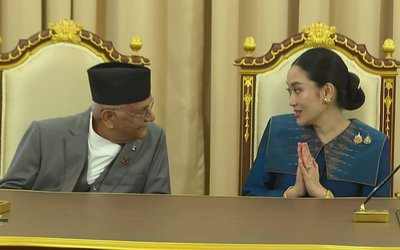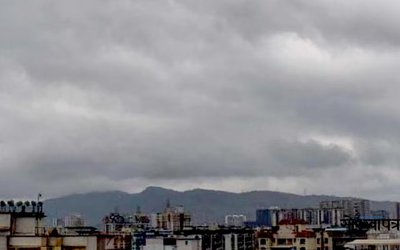
Earthquakes in high mountain regions like the one that struck Nepal in 2015 can trigger large landslides that bury villages, flood rivers and block important international roads, resulting in catastrophic human and economic losses.
University of Dayton associate professor of geology Umesh Haritashya will study the conditions and triggers of landslides in the Himalaya and Karakorum mountains of Southeast Asia under a new $1.17 million grant from NASA.
According to University of Dayton, Haritashya and a pair of University of Arizona research colleagues hope to better understand the relationship between earthquakes and landslides, and their potential for recurrence and disruption. The research could help determine safer locations for communities and infrastructure in the national border areas of Bhutan, China, Nepal, India and Pakistan. The project started June 1 and is funded through 2020.
This is the third time in five years NASA has awarded research funding to Haritashya. Last year, his team received a $630,000 grant to study how the heating of glacial lakes is accelerating the melting and retreat of glaciers in the Asian Himalayas. In 2012, they were awarded nearly $1 million to conduct analysis of glacial lakes in the Hindu Kush-Himalaya region. This new funding isn’t related to his previous NASA projects.
The University of Dayton will receive nearly $253,000 from the new grant to support Haritashya’s research, which involves using satellite imagery to map historic landslides and determine the speed at which they moved. He also will create computer models of rivers blocked by the debris, which can form large, artificial lakes behind the landslide that are hemmed in by loose sediment.
“Once the water pressure increases that artificial lake could bust out and flood downstream,” Haritashya said. “I will be modeling the hydrology of such flood scenarios.”
His colleagues’ research will include modeling earthquakes and the region’s mountain ridges. They will simulate seismic events of various magnitudes to track the resulting energy waves through the mountains, as well as their potential impacts.
Currently, little is known about earthquake wave propagation and its relationship to large landslides. For example, a 7.9-magnitude earthquake in one part of the region resulted in 3,000 to 4,000 landslides. Another earthquake of the same magnitude in China several years ago resulted in 50,000 to 80,000 landslides.
“The project is going to advance the science to a new level,” Haritashya said.
The April 2015 Nepal earthquake killed nearly 9,000 people and injured almost 22,000. The magnitude 7.8 earthquake caused an avalanche on Mount Everest, killing 21 people, and landslides in the Langtang valley, where 250 people were reported missing. Entire villages were buried, leaving hundreds of thousands of people homeless.
“Dr. Haritashya’s work is not just cutting-edge science; it is directly beneficial to thousands — perhaps millions — of people who live in this earthquake-prone region,” said Dan Goldman, professor and chair of the department of geology. “His work on Himalayan water resources and glacial lake outburst flooding is critical to the safety and future prosperity of people living in India, Pakistan, Nepal and China.”
The project also will benefit students in Haritashya’s geomorphology course, which involves the study of the earth’s surface features and their relationship to its geological structures. For example, a geology graduate who takes a job with the U.S. Department of Transportation might have to address the landslides that frequently block the nation’s roads and rivers.
“Geologists are always in need to look into the occurrence of landslides, so students who take the geomorphology course will be able to better understand the concepts behind it,” Haritashya said. “It is definitely going to bring a lot of new science into the classroom.”
In addition, the new grant will allow him to hire several student research assistants to support his work.
Haritashya holds a doctorate degree from the Indian Institute of Technology, India, where he studied glacier hydrology, modeling and image analysis. He joined the University of Dayton’s department of geology in 2008 after completing post-doctoral research appointment in NASA's international Global Land Ice Measurements from Space project at the University of Nebraska-Omaha.
https://udayton.edu/news/articles/2017/07/nasa_landside_research.php
- IME GROUP: Expands Into Paper Industry
- Mar 24, 2025
- CPN UML: Instigated By India
- Mar 23, 2025
- ADB’S CHIEF ECONOMIST: Nepal Reduces Poverty
- Mar 11, 2025
- FM DR. DEUBA: A Successful Visit
- Mar 11, 2025
- MD GHISING: Target Of Personal Grudge
- Mar 09, 2025













